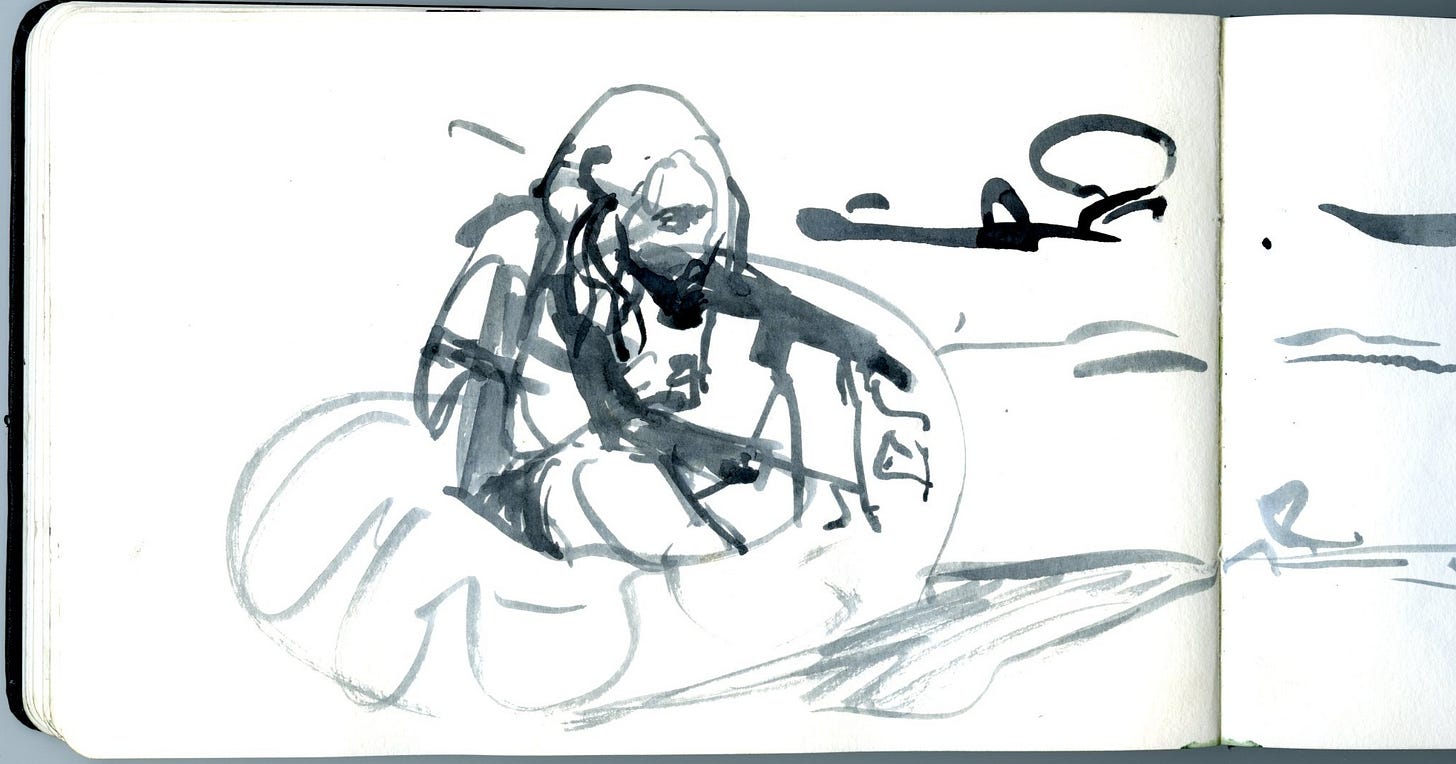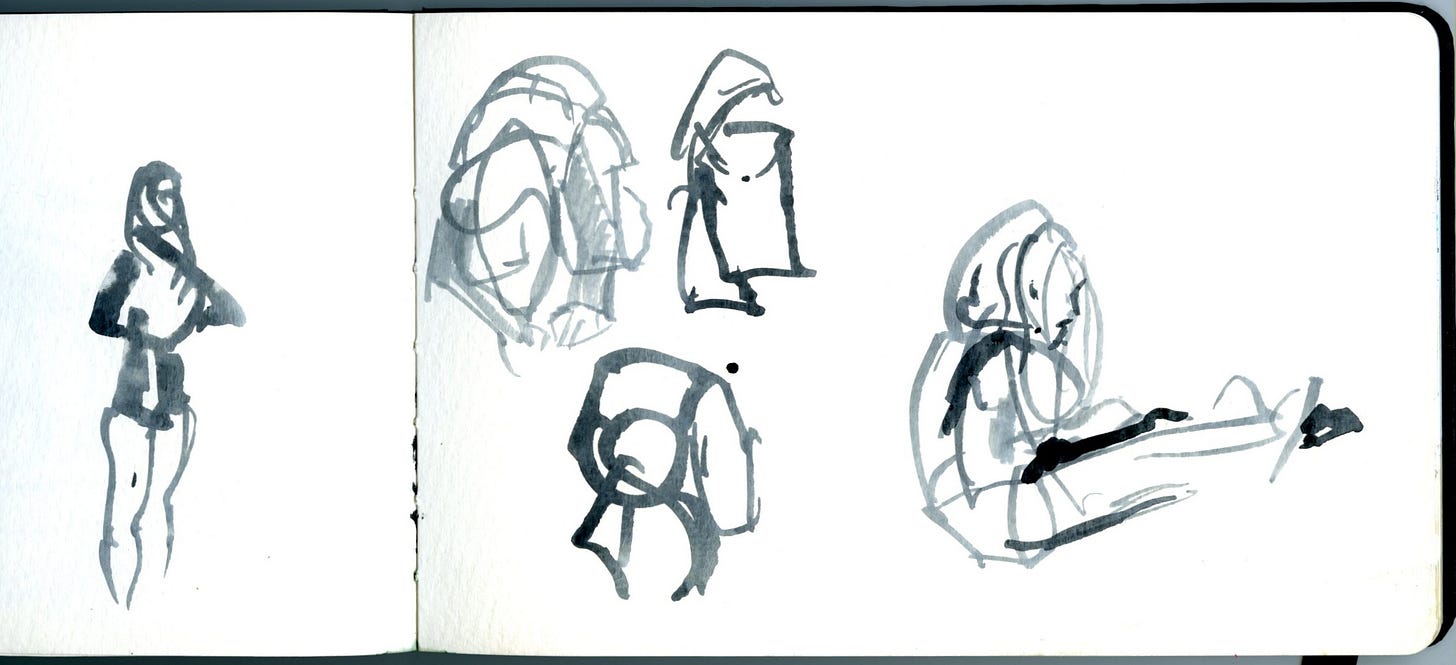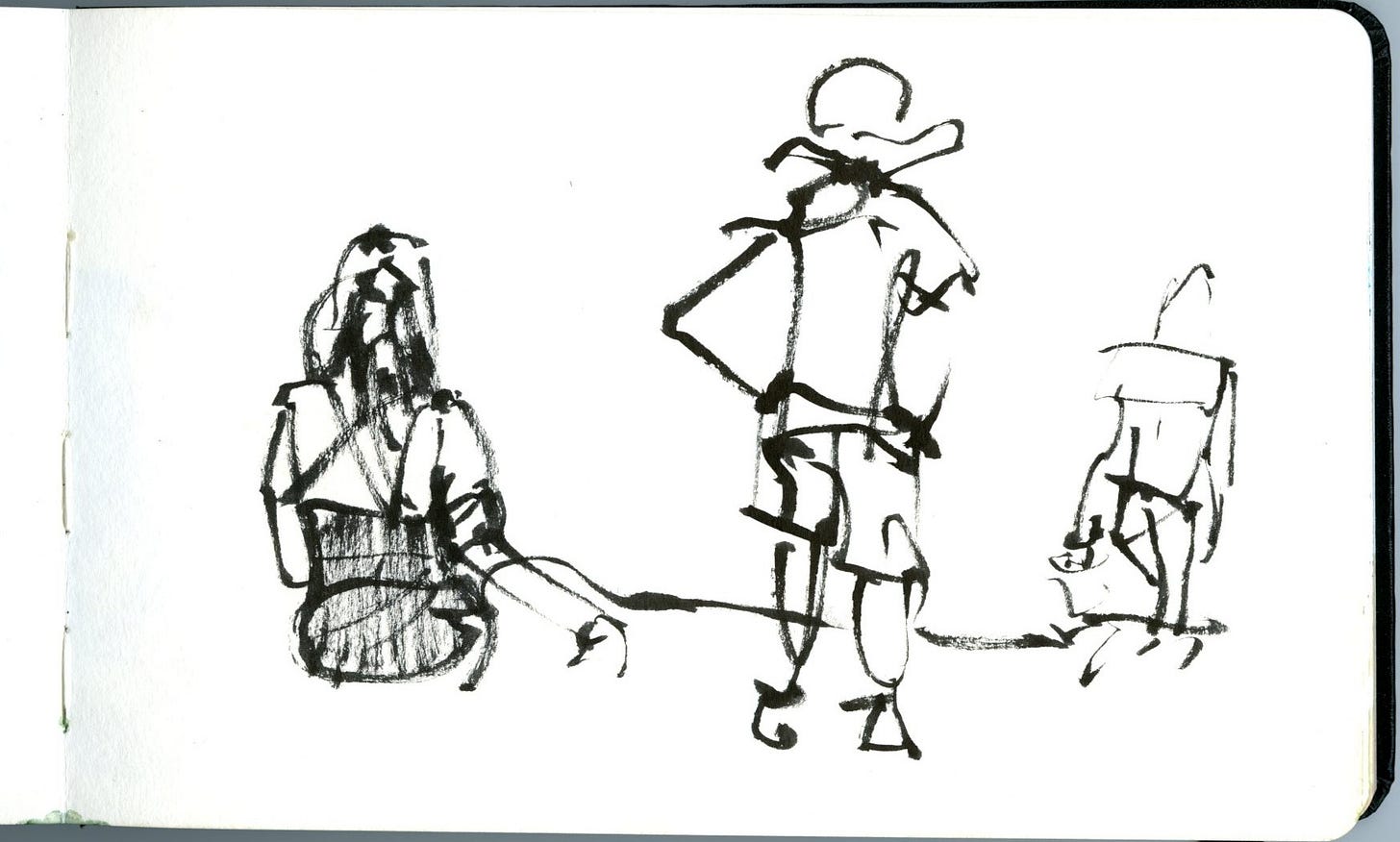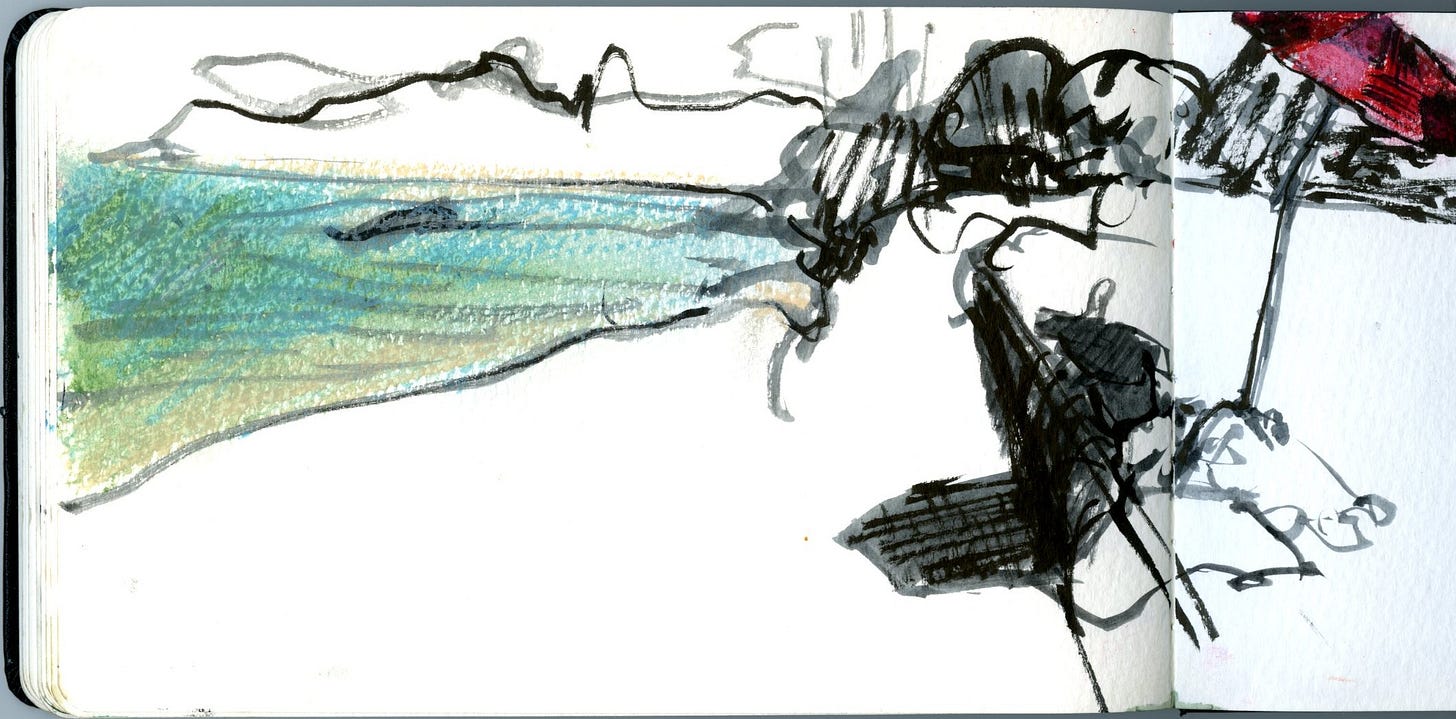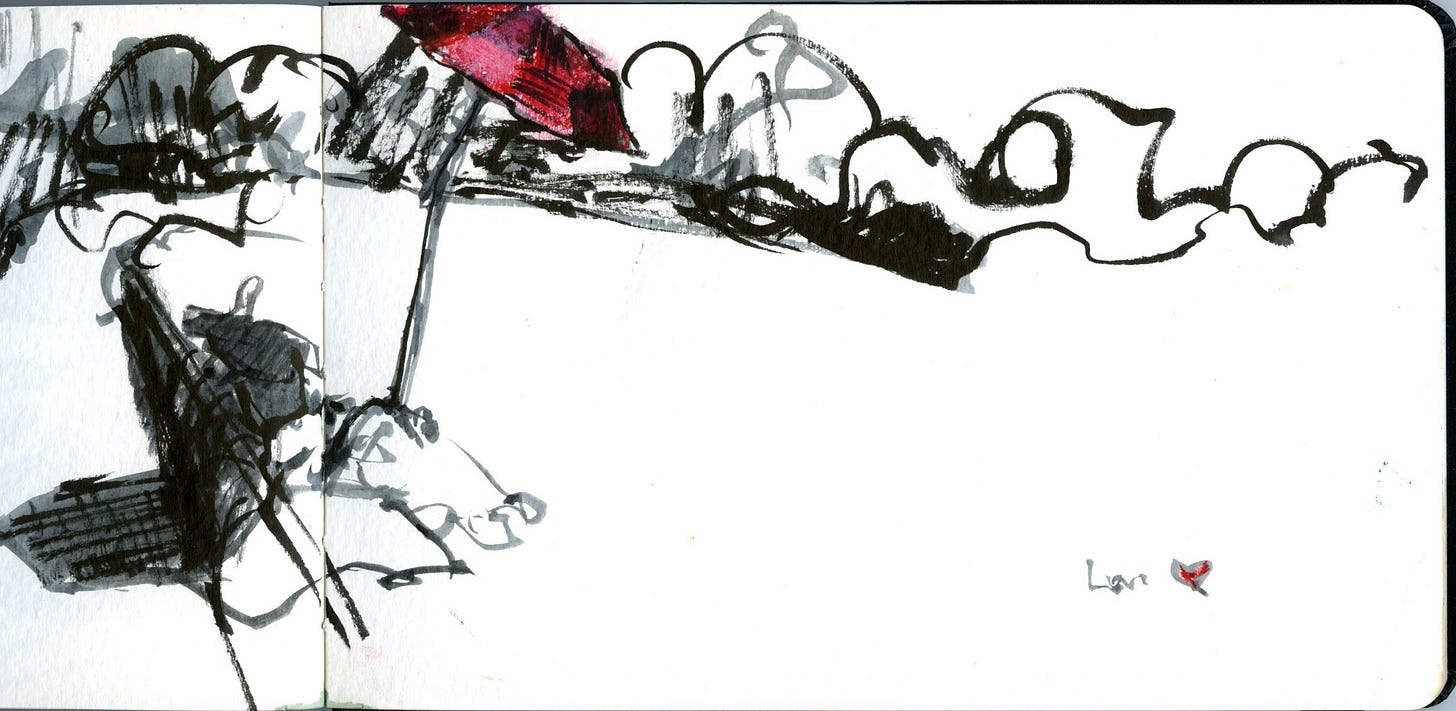An oxbow is either the u-shaped curve of wood that fits into an ox’s yoke and goes under its neck; or it is a u-shaped bend in a river; or it is the piece of land enclosed by such a bend. The Sandy River makes three huge serpentines through Oxbow Park, so there are, depending on how you count, three or six oxbows in the park (assuming no yoked oxen are present).
On Tuesday, we finally made it to the river. The group was ready before Jim and I had finished packing up lunch, but Beverly and Megan both said they’d be happy to watch the girls, so I sunscreened them up and sent them off in their bathing suits, and returned to wash the dishes in slow peace.
Why Jim takes radio equipment on most of our camping trips is a story of its own, one that began with his discovery of the Cascadia Quake. His interest in ham radio has so far resulted in no fewer than four well-camouflaged but extremely large antennas installed on and around our house, and in my taking not only the entry-level Technician’s exam, but also the mid-level General exam. (I passed. My call sign is KT4NGO.)
At Oxbow, Jim had contented himself with just two Baofeng handheld radios. When I finished the dishes and put on my backpack (filled with snacks, water, and drawing materials), he said he wanted to stay back and tidy our campsite for a bit. “Just so it’s not an eyesore for other people. I want to be a good neighbor. And also I should adjust the guy wires for the rain cover on the hammock. Do you mind going ahead?”
“Kind of,” I said. “But I also get why you want to do all that.”
He peered at me slyly from under his lovely thick eyebrows. “If you miss me, you could take a radio and talk to me on the way.”
“You want to test the range.”
He grinned unrepentantly. Lacking a good comeback and slightly curious myself, I clipped a radio to my pack.
When I got to the big, sandy bend after a ten-minute walk along Oxbow’s trails, I scanned the beach. Lucy and Naomi were both thrashing about gleefully, wearing life vests I had not brought and holding colorful floaties. Bev was out on a paddle board, looking hourglassy and strong in a white long-sleeved sun shirt and a big hat, her feet tucked neatly under her as she dipped her paddle and glided between the delightedly screaming kids.
I looked at the circle of chairs holding parents, thought of my sketchbook, hesitated, and then headed a bit further down the beach, planting myself on a large log in full sun. I hunted for my fountain pens, which I’d used successfully to capture the girls building rock dams at the Ho River in Olympic National Park a few weeks ago, on another magical trip. (I still can’t believe three of my German friends—Susi, Anja, and Anja’s husband Isy—flew to America to spend two weeks with us. True, they threw in a week in New Orleans beforehand, and they have more vacation than we do, but still. )
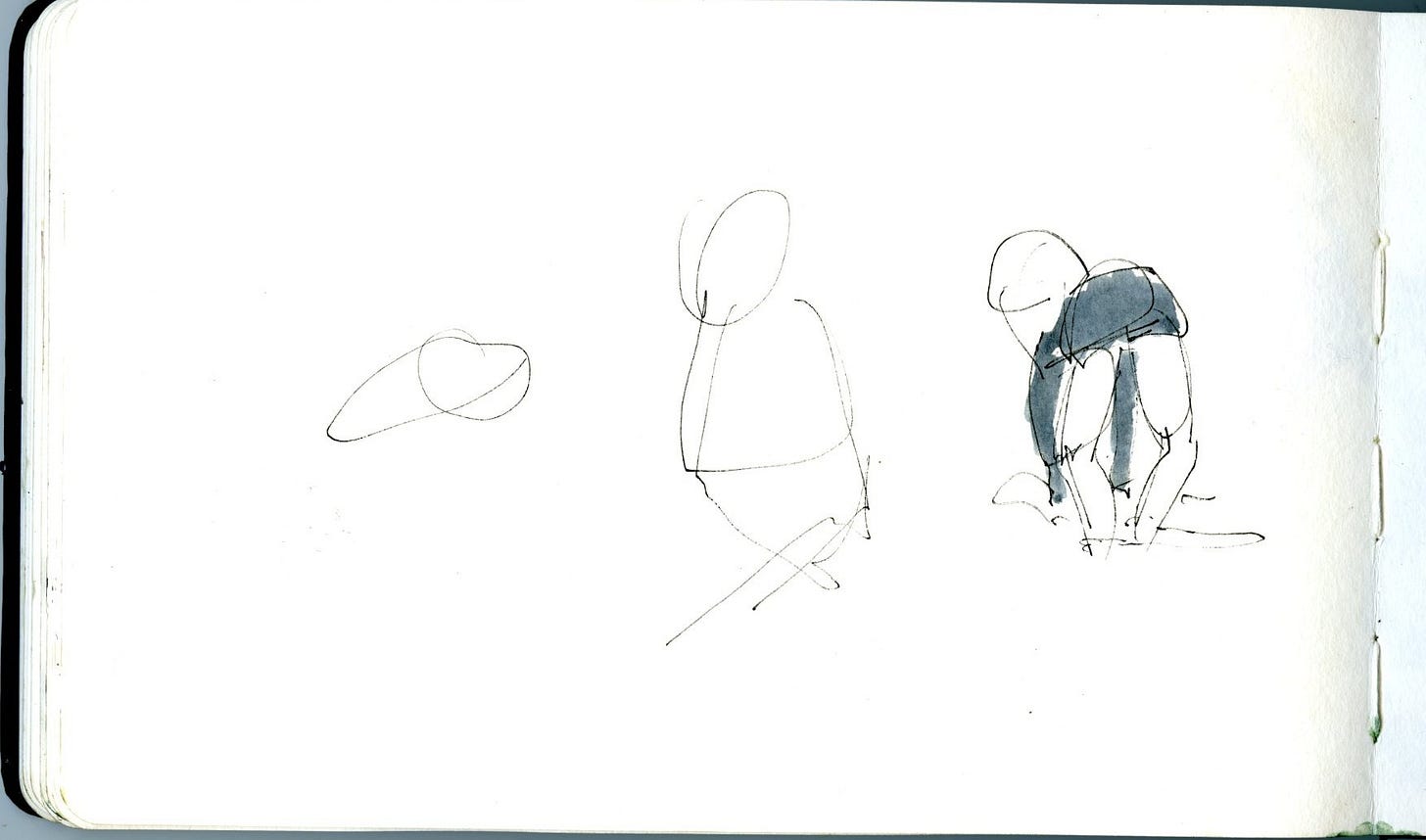
After checking all the pockets, I realized I’d left the fountain pens at home. After a moment of consternation, I fished out my metal pencil-box, the one with the mouse on it that I got from Susi when I moved away from Germany at age sixteen. Tust mich nicht vergessen, gell? it says, and the mouse has big sad eyes. (Don’t forget me, ‘kay?) It is battered from use; it always holds a basic selection of favorite drawing tools, and I can’t believe I haven’t lost it in thirty years. I tried several different pens and brushes, but nothing quite worked.
Naomi came over, and plopped herself down in front of me on her borrowed floatie. “Draw me!” she said. She sat admirably still, hunched over in her life vest, pouring sand from one hand to the other, and only asking three times, “When will you be done?”
“Now,” I finally told her. “Want to see?”
“Mom! That isn’t a drawing. That’s all scribbles!” Disgusted, she picked up her floatie and was off.
I tried drawing Naomi on the go (Lucy was down the river a bit with Dani on another pilfered floatie).
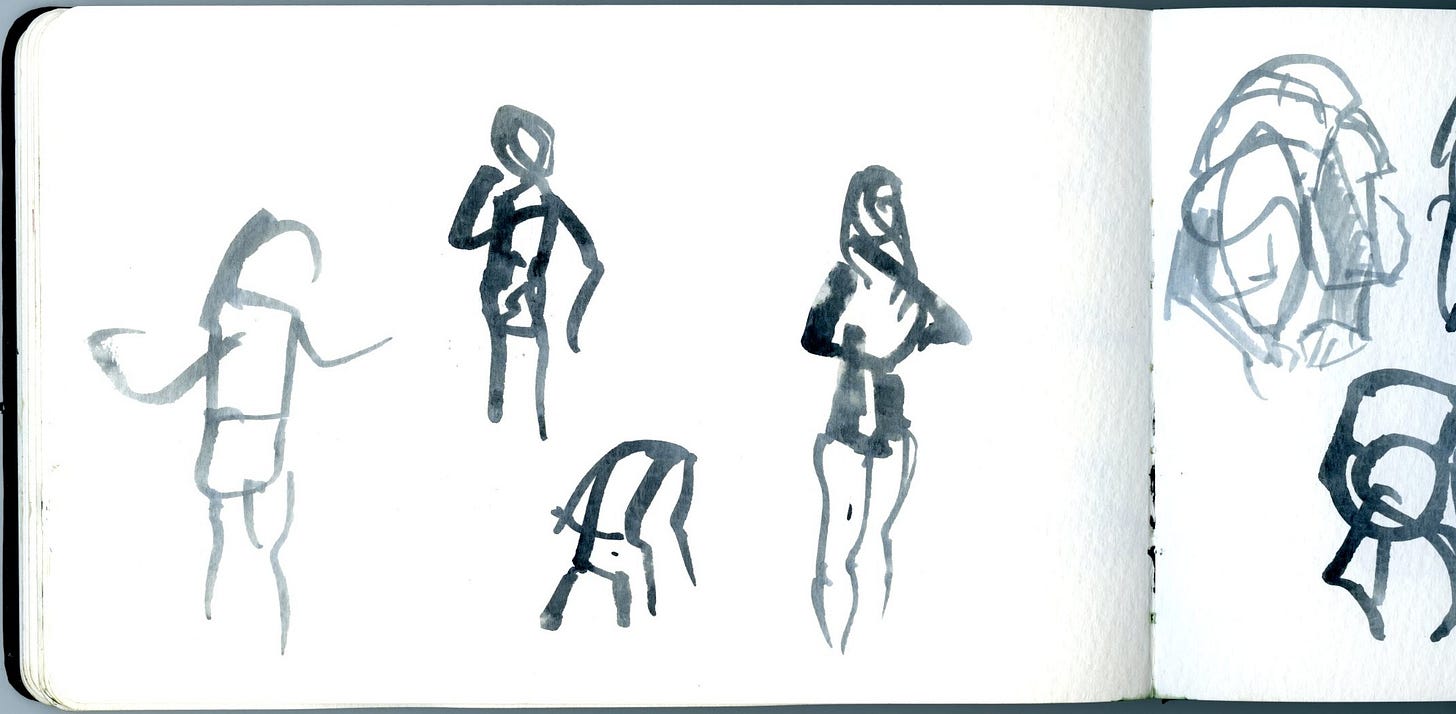
Thinking of Chinese calligraphers who wrote their pictographs and drew their mountain landscapes with one brush loaded with black ink, I decided to try the brush pen I hardly ever used. This one was a winner. It caught the figures quickly, and gave me a nice contrast between saturated black lines and drier, textured ones.
I was getting distracted by a woman in a high-cut bathing suit—I wonder how old she is, and what would I look like standing out there in the water?—when Jim showed up. “It’s hot,” he said, looking around him a bit restlessly. Then: “Why didn’t you radio me?”
“I did. You didn’t answer.”
“Hm. If I walk back will you keep your radio out and let me test the reception along the way and see how far I can get?”
“Okay.”
I kept drawing. “This is KF0RST,” the radio scratched. “Calling KT4NGO.”

I picked up the Baofeng, pressed the transmit button, and said “KT4NGO, calling KF0RST.” Eventually the radio went silent, and just as I was forgetting all about it, Jim returned, bearing the umbrella Lucy had bought herself at Powell’s and insisted upon bringing on the trip. He tied it to a stick, wedged it into the ground using rocks, piled sand up around the base, and convinced both girls to run back and forth to the river, fetching water to pour slowly on the mound of sand in order to firm it up and help it hold.
It was a custom-built one-person shade station.
I kept drawing. The girls began decorating the base of the umbrella-on-a-stick with river rocks. Jim walked back to tidy and adjust more guy wires.


